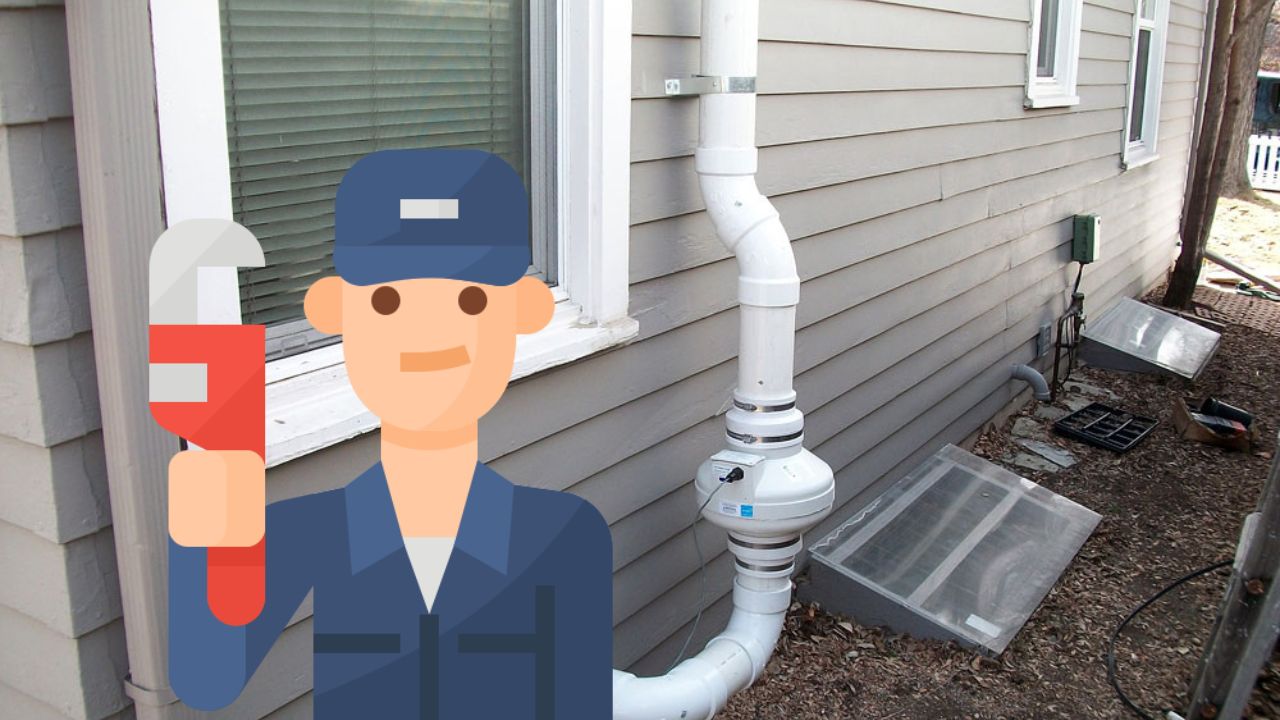Radon is a colorless, odorless radioactive gas that can seep into homes from the ground. It poses serious health risks, including lung cancer, making radon mitigation a critical aspect of home safety. But when it comes to installing radon mitigation systems, many homeowners wonder: Do plumbers install radon mitigation systems?
Table of Contents
Understanding Radon and Its Risks
What is Radon?
Radon is a naturally occurring gas that results from the breakdown of uranium in soil, rock, and water. It can enter homes through cracks in the foundation, walls, and other openings. As a heavy gas, radon tends to accumulate in lower levels of buildings, such as basements and crawl spaces.
Prolonged exposure to high levels of radon can lead to serious health issues, primarily lung cancer. Understanding the nature and behavior of radon is crucial for effectively mitigating its presence in residential environments.
Health Risks of Radon Exposure
According to the Environmental Protection Agency (EPA), radon is the second leading cause of lung cancer in the United States. The risk is even higher for smokers. Radon exposure is insidious because it is undetectable without specific testing; homeowners can live with elevated radon levels for years without knowing.
The gas decays into radioactive particles that, when inhaled, can damage lung tissue over time. This damage increases the likelihood of developing lung cancer, particularly among those with prolonged exposure. Understanding these risks underscores the importance of testing for radon and, if necessary, installing a mitigation system to reduce its levels.
Radon Mitigation Systems: An Overview
What is a Radon Mitigation System?
A radon mitigation system is designed to reduce radon levels in a building. These systems typically involve venting radon gas from beneath the home’s foundation to the outside, preventing it from entering the living space.
There are various types of radon mitigation systems, including sub-slab depressurization, drain tile suction, and sub-membrane depressurization. Sub-slab depressurization is the most common method, where a pipe and fan system draws radon from beneath the house and expels it outside. Understanding the mechanics and effectiveness of different systems helps in choosing the right approach for each specific home.
Components of a Radon Mitigation System
- Vent Pipes: These pipes run from the foundation to the roof, allowing radon gas to escape. Properly installed vent pipes ensure that radon is safely transported out of the home without re-entering.
- Fans: Specially designed fans help to pull radon gas from beneath the foundation and vent it outside. These fans are a crucial component, as they create the necessary suction to draw radon gas out effectively.
- Sealing Cracks: Sealing cracks and openings in the foundation prevents radon from seeping into the home. This step enhances the overall efficiency of the mitigation system by limiting the points of entry for radon gas.
The Role of Plumbers in Radon Mitigation
Do Plumbers Install Radon Mitigation Systems?
While plumbers are skilled in various aspects of home systems, including piping and ventilation, installing a radon mitigation system is a specialized task. Plumbers may have the technical know-how to assist in parts of the installation, such as installing vent pipes or sealing cracks.
However, the comprehensive design and installation of a radon mitigation system typically require the expertise of certified radon mitigation professionals. Plumbers can play a supportive role, but the primary responsibility should be handled by those specifically trained in radon mitigation.
Why Certified Radon Mitigation Professionals?
Certified radon mitigation professionals have specific training and expertise in detecting radon levels and installing mitigation systems. They follow protocols established by organizations like the EPA and the National Radon Proficiency Program (NRPP).
Their certification ensures that they adhere to industry standards and best practices, which is crucial for effective radon mitigation. These professionals are equipped with the knowledge to handle complex situations, such as homes with unique structural challenges or varying levels of radon. Employing certified professionals ensures that the mitigation system is not only installed correctly but also optimized for long-term effectiveness.
Steps in Installing a Radon Mitigation System
Initial Radon Testing
The first step in radon mitigation is testing the home’s radon levels. Homeowners can use DIY radon test kits or hire professionals to conduct thorough testing. DIY kits are affordable and easy to use, but professional testing offers more accuracy and reliability.
If the radon levels are above the EPA’s recommended action level of 4 picocuries per liter (pCi/L), a mitigation system is necessary. Professional radon testing can provide a detailed report, highlighting areas with the highest radon concentration and guiding the installation process.
System Design and Planning
A certified radon mitigation professional will design a system tailored to the home’s structure and radon levels. This involves selecting the appropriate type of system and determining the best locations for vent pipes and fans.
The design process includes a thorough assessment of the home’s foundation, potential entry points for radon, and the overall layout. Customized system design ensures that the mitigation efforts are efficient and effective, addressing the specific needs of the home.
Installation Process
- Drilling Access Points: Access points are drilled into the foundation to install vent pipes. This step requires precision to ensure that the pipes are placed in optimal positions for effective radon extraction.
- Installing Vent Pipes: Pipes are installed to channel radon gas from beneath the foundation to the outside. The installation must ensure airtight connections to prevent radon leakage.
- Sealing Cracks: Cracks and openings in the foundation are sealed to prevent radon entry. This step enhances the efficiency of the system by minimizing potential radon pathways.
- Installing Fans: Fans are installed to help vent radon gas outside efficiently. The fans must be properly calibrated to maintain the necessary suction pressure for effective radon removal.
Post-Installation Testing and Maintenance
After the system is installed, post-installation testing is conducted to ensure it effectively reduces radon levels. This testing confirms that the system is working as intended and that radon levels are within safe limits. Regular maintenance checks are also recommended to ensure the system continues to function correctly.
Maintenance may include inspecting and cleaning fans, checking for new cracks in the foundation, and re-testing radon levels periodically. Ongoing maintenance ensures the long-term effectiveness of the radon mitigation system and the safety of the home’s occupants.
Benefits of Professional Radon Mitigation
Ensuring Safety and Health
Professional installation of radon mitigation systems ensures that the system is effective in reducing radon levels, thus protecting the health of the home’s occupants. Certified professionals have the expertise to handle complexities and potential issues that may arise during installation.
Their knowledge and experience ensure that the mitigation system is tailored to the specific needs of the home, providing optimal protection against radon exposure.
Compliance with Standards
Hiring certified professionals ensures compliance with EPA and NRPP standards. This not only guarantees the system’s effectiveness but also provides peace of mind for homeowners knowing their home is safe from radon risks.
Compliance with standards is critical for ensuring that the mitigation system meets all safety and performance criteria, offering reliable and long-lasting protection.
Long-Term Effectiveness
Professional installation includes follow-up testing and regular maintenance, ensuring the long-term effectiveness of the mitigation system. This proactive approach helps maintain safe radon levels over time.
Regular monitoring and maintenance allow for the early detection of potential issues and timely adjustments, ensuring the system continues to function effectively and protects the home’s occupants from radon exposure.
Conclusion
While plumbers possess a wide range of skills in home maintenance and repair, the installation of radon mitigation systems requires specialized knowledge and certification. Certified radon mitigation professionals are equipped with the expertise necessary to design and install systems that effectively reduce radon levels, ensuring the safety and health of homeowners.
For anyone concerned about radon exposure, investing in professional radon mitigation services is a crucial step toward a safer living environment. Ensuring that your home is protected from radon requires not just any technician, but a certified expert who can provide reliable and effective mitigation solutions.




